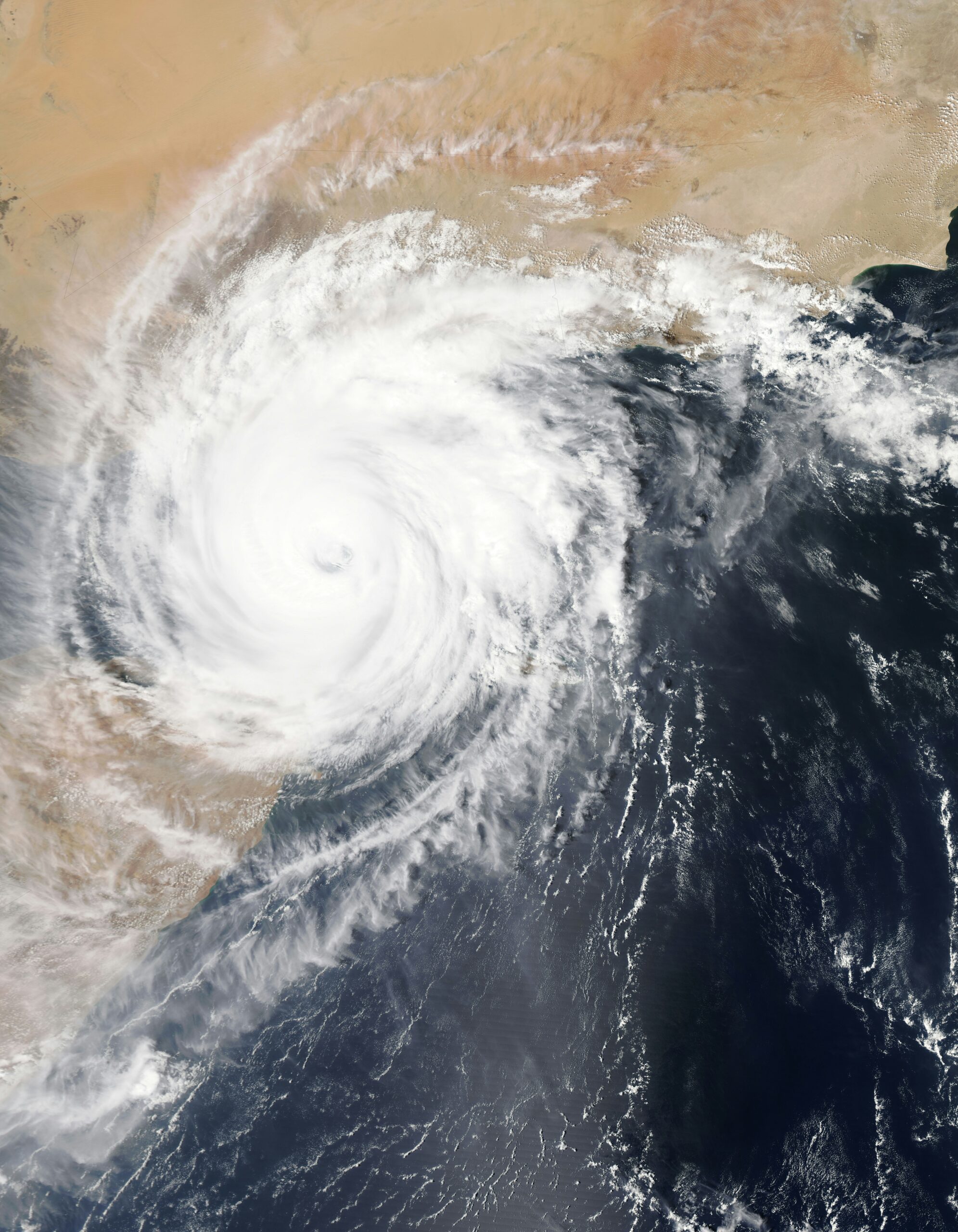Introduction to Weather Alerts
Weather alerts play a crucial role in safeguarding public health and safety by providing timely information about hazardous weather conditions. These alerts are designed to inform the public about potential or imminent severe weather events, allowing individuals and communities to take appropriate precautions. Weather alerts are typically issued by a variety of agencies, including the National Weather Service (NWS), local meteorological departments, and emergency management organizations. These agencies collaborate closely to ensure that accurate and up-to-date information is disseminated to the public.
The primary purpose of weather alerts is to mitigate the impact of adverse weather conditions by enabling people to prepare adequately. This preparation can range from simple actions, such as staying indoors during a thunderstorm, to more complex measures, like evacuating areas prone to flooding. Weather alerts contribute to reducing the risk of injury, loss of life, and property damage by providing clear and actionable information.
There are several types of weather alerts, each tailored to specific weather phenomena and their potential impacts. Common alerts include severe thunderstorm warnings, severe thunderstorm watches, special marine warnings, and coastal flood advisories. Each of these alerts serves a distinct purpose and is issued under different criteria. For instance, a severe thunderstorm warning is issued when a thunderstorm is imminent or occurring, while a severe thunderstorm watch indicates that conditions are favorable for the development of such storms.
Moreover, the process of issuing weather alerts involves sophisticated technology and expert analysis. Meteorologists utilize weather radar, satellite imagery, and computer models to monitor atmospheric conditions and predict potential hazards. This data is then interpreted to determine the likelihood and severity of weather events, guiding the issuance of appropriate alerts. The collaboration between agencies and the use of advanced technology ensures that alerts are both timely and reliable.
Understanding weather alerts and their significance is essential for public safety. As we explore specific types of weather alerts in subsequent sections, it will become evident how these alerts function and why they are integral to our daily lives.
Severe Thunderstorm Warning
A severe thunderstorm warning is an alert issued by meteorological authorities when a thunderstorm is imminent or already occurring, characterized by severe weather conditions. The criteria for issuing such a warning typically include the presence of winds exceeding 58 miles per hour, hail that is at least one inch in diameter, or the occurrence of frequent lightning. These elements can pose significant risks to life and property, making timely and effective responses crucial.
High winds associated with severe thunderstorms can cause widespread damage, toppling trees, power lines, and even buildings. Hailstones, particularly those that meet or exceed the one-inch diameter threshold, can shatter windows, damage vehicles, and destroy crops. Lightning, another critical component of severe thunderstorms, poses direct threats to individuals and can ignite fires, increasing the potential for widespread destruction.
When a severe thunderstorm warning is issued, individuals should take immediate actions to safeguard themselves and their property. It is advisable to seek shelter in a sturdy building, avoiding windows and doors. Staying indoors minimizes the risk of being struck by lightning or injured by flying debris. For those caught outside, finding shelter in a low-lying area away from trees, poles, and metal objects can offer some protection. Additionally, securing outdoor furniture and other loose items can prevent them from becoming projectiles.
Real-life examples underscore the importance of heeding severe thunderstorm warnings. According to the National Weather Service, severe thunderstorms in the United States caused an estimated $2 billion in damages in 2020 alone. High winds and large hailstorms were responsible for the majority of this damage, highlighting the destructive potential of such events. Moreover, the Centers for Disease Control and Prevention reports that lightning strikes cause an average of 27 deaths each year in the U.S., emphasizing the lethal nature of thunderstorms.
Understanding the criteria and risks associated with severe thunderstorm warnings, and knowing the appropriate safety measures, can significantly mitigate the dangers posed by these powerful weather phenomena. By staying informed and prepared, individuals can protect themselves and their property from the severe impacts of thunderstorms.
Severe Thunderstorm Watch
A severe thunderstorm watch is issued when atmospheric conditions are favorable for the development of severe thunderstorms in and close to the watch area. This means that the environment has the potential to produce storms capable of generating large hail, damaging winds, and possibly tornadoes. A severe thunderstorm watch does not necessarily mean that severe weather is imminent; rather, it indicates that conditions are conducive to such events, and people should remain vigilant.
One of the primary distinctions between a severe thunderstorm watch and a severe thunderstorm warning lies in the immediacy and certainty of the threat. While a watch suggests that severe weather is possible, a warning indicates that severe weather has been observed or is expected very soon. During a watch, individuals should prepare by staying informed and ready to take action if a warning is issued.
When a severe thunderstorm watch is in effect, it is crucial to monitor local weather updates through trusted sources such as the National Weather Service (NWS), weather apps, or local news channels. Keeping a weather radio on hand can also provide timely alerts. It is advisable to review your emergency plan and ensure that you have a reliable method for receiving alerts, especially if you are traveling or engaged in outdoor activities.
Additionally, individuals should secure outdoor items that could become projectiles in strong winds and identify the safest areas in their homes or workplaces to take shelter if a storm develops. Staying informed and being prepared during a severe thunderstorm watch can significantly reduce the risk of injury and damage.
In summary, the issuance of a severe thunderstorm watch is a call to be alert and ready for potential severe weather. By understanding the conditions that prompt a watch and taking proactive measures, you can enhance your safety and well-being during these periods of heightened weather risk.
Special Marine Warning
A Special Marine Warning is a critical advisory issued to alert mariners and coastal residents about hazardous maritime conditions. These warnings are particularly significant for individuals who work or spend time on the water, as they signal immediate threats such as high winds, large waves, or waterspouts. Understanding what triggers a Special Marine Warning and the precautions to take can make a significant difference in ensuring safety.
Special Marine Warnings are typically triggered by sudden and severe weather conditions that pose an imminent danger to those at sea. High winds exceeding 34 knots, large waves that can capsize boats, and waterspouts that can cause significant damage are primary triggers. These warnings are usually short-term and localized, targeting specific areas where the hazardous conditions are expected to occur.
The dangers indicated by a Special Marine Warning are numerous and severe. High winds can lead to loss of vessel control, making navigation extremely difficult and dangerous. Large waves can overwhelm smaller vessels, potentially leading to capsizing and loss of life. Waterspouts, which are essentially tornadoes over water, can cause catastrophic damage to boats and coastal structures. Mariners and coastal residents must heed these warnings to avoid life-threatening situations.
When a Special Marine Warning is issued, mariners should take immediate safety measures. This includes securing all loose items on the vessel, reducing speed, and heading to the nearest safe harbor if conditions permit. Coastal residents should avoid waterfront activities and stay informed through reliable weather updates. It is crucial to have a well-prepared emergency plan and access to safety equipment such as life jackets and emergency radios.
Communication of Special Marine Warnings is vital for ensuring public safety. These warnings are disseminated through various channels, including NOAA Weather Radio, marine broadcasts on VHF radio, and online weather services. Mariners and coastal residents should stay vigilant and regularly monitor these sources for the latest updates.
In summary, Special Marine Warnings play a pivotal role in safeguarding those on the water and along the coasts. By understanding the triggers, dangers, and appropriate safety measures, mariners and coastal residents can better prepare for and respond to these critical warnings.
Coastal Flood Advisory
A Coastal Flood Advisory is issued when coastal flooding is expected, which can significantly impact communities, infrastructure, and the environment. Coastal flooding occurs when water levels rise and inundate areas that are normally dry. This phenomenon is typically driven by a combination of factors such as high tides, storm surges, and prolonged rainfall. Particularly vulnerable are low-lying coastal regions where even moderate increases in water levels can lead to significant flooding.
The impacts of coastal flooding can be extensive and disruptive. Communities may experience road closures, loss of power, and damage to homes and businesses. Infrastructure such as bridges, sewer systems, and public transportation can be severely affected, leading to long-term economic and logistical challenges. Environmentally, coastal flooding can result in erosion, habitat destruction, and contamination of freshwater sources with saltwater, posing a threat to local ecosystems and biodiversity.
To prepare for a Coastal Flood Advisory, residents should stay informed through local weather updates and heed any warnings from authorities. Evacuation procedures should be well-understood and practiced, ensuring that all family members know the safest routes and have a plan for where to go. It’s advisable to have an emergency kit ready, containing essentials such as water, food, medication, and important documents.
Safeguarding property against coastal flooding involves several proactive steps. Elevating critical utilities like electrical panels, HVAC units, and water heaters can help mitigate damage. Installing flood barriers or sandbags can provide additional protection against encroaching water. Additionally, moving valuables and important documents to higher ground can prevent loss and facilitate a quicker recovery post-flooding.
Understanding and preparing for a Coastal Flood Advisory can significantly reduce the risks and impacts associated with coastal flooding. By staying informed and taking proactive measures, individuals and communities can better navigate the challenges posed by rising water levels and ensure a more resilient response to future flood events.
Technology and Tools for Weather Monitoring
Modern weather monitoring relies on a sophisticated array of technological tools and systems to accurately track and predict severe weather conditions. Among the primary instruments are radar systems, which use radio waves to detect precipitation, its intensity, and movement. Doppler radar, in particular, is invaluable in identifying the velocity of rain droplets, thus helping meteorologists pinpoint the presence and movement of severe thunderstorms.
Satellites are another critical component, providing comprehensive, real-time images of weather patterns from space. These satellites can observe atmospheric conditions on a global scale, allowing for the monitoring of large weather systems such as hurricanes and cyclones. The data gathered from satellites is essential for understanding the dynamics of severe weather and issuing timely alerts, including severe thunderstorm warnings and coastal flood advisories.
Ground-based weather stations are scattered across various locations, measuring local atmospheric conditions such as temperature, humidity, wind speed, and barometric pressure. These stations offer invaluable real-time data that feeds into larger predictive models. Weather buoys and marine stations play a similar role in monitoring maritime conditions, which are crucial for issuing special marine warnings.
Meteorologists synthesize data from these diverse sources, using complex algorithms and computerized models to forecast weather conditions. They analyze trends and patterns, enabling them to predict severe weather events with increasing accuracy. This predictive capability is vital for public safety, as it allows for the issuing of timely severe thunderstorm watches and other alerts.
Public access to weather monitoring tools has also greatly improved. Numerous apps and websites provide real-time weather updates, radar images, and severe weather alerts. These platforms empower individuals to stay informed and make necessary preparations. Advanced notification systems, such as wireless emergency alerts (WEA) and integrated public alert and warning systems (IPAWS), ensure that critical information reaches the public swiftly and effectively.
Community Preparedness and Response
Community preparedness is crucial in mitigating the impacts of severe weather events such as severe thunderstorms, special marine warnings, and coastal flood advisories. The cornerstone of an effective response lies in the development of comprehensive community emergency plans that involve all stakeholders, including residents, local governments, and organizations. These plans should outline clear protocols for communication, evacuation, and resource distribution to ensure a coordinated and swift response when severe weather alerts are issued.
Conducting regular drills is essential for testing the efficacy of these emergency plans. Drills provide an opportunity for residents and first responders to practice their roles, familiarize themselves with evacuation routes, and identify any potential gaps in the plan. Communities should consider a variety of scenarios, from severe thunderstorms to coastal flooding, to ensure readiness for different types of severe weather events.
Education is another critical component of community preparedness. Residents should be informed about the various types of weather alerts and the specific actions they should take in response to each one. For instance, understanding the difference between a severe thunderstorm warning and a severe thunderstorm watch can significantly impact the actions taken by individuals and families. Public awareness campaigns, workshops, and the distribution of educational materials can help achieve this goal.
Local governments and organizations play a pivotal role in supporting community preparedness and response efforts. They are responsible for coordinating emergency services, disseminating timely information, and providing resources such as shelters, sandbags, and medical aid. Collaboration with neighboring jurisdictions and state agencies can enhance resource availability and logistical support during severe weather events.
Ultimately, a well-prepared community is one where every member understands their role and is equipped with the knowledge and resources to act swiftly and effectively in response to severe weather alerts. By emphasizing collective preparedness and fostering a culture of resilience, communities can better withstand and recover from the impacts of severe weather events.
Conclusion: Staying Informed and Safe
In conclusion, understanding the various types of weather alerts such as Severe Thunderstorm Warning, Severe Thunderstorm Watch, Special Marine Warning, and Coastal Flood Advisory is crucial for ensuring personal and community safety. Each alert serves a specific purpose and conveys different levels of urgency, emphasizing the need for prompt and appropriate actions.
It is essential to stay informed through reliable sources such as the National Weather Service or trusted weather apps. Signing up for weather alerts can provide timely updates and critical information, helping you make informed decisions during severe weather events. Always have a safety plan in place, whether it involves seeking shelter, avoiding travel, or securing property, to mitigate risks associated with adverse weather conditions.
Furthermore, promoting weather awareness within your community can significantly enhance collective preparedness. Share this information with family, friends, and neighbors to foster a culture of safety and resilience. Encourage others to stay vigilant and proactive in responding to weather alerts.
By understanding and respecting weather alerts, we can better protect ourselves and our loved ones from the dangers posed by severe weather. Stay informed, stay prepared, and stay safe.



